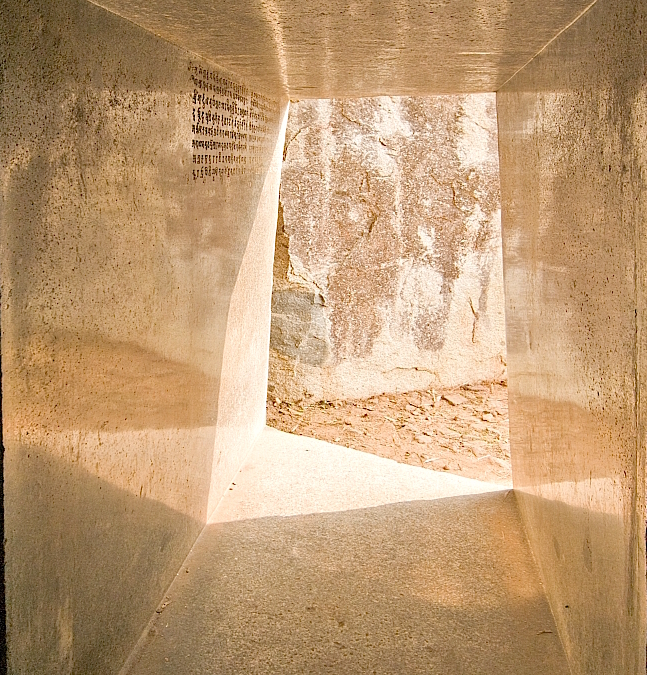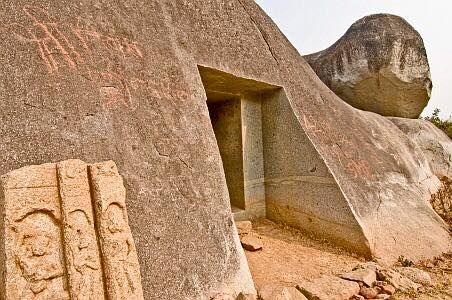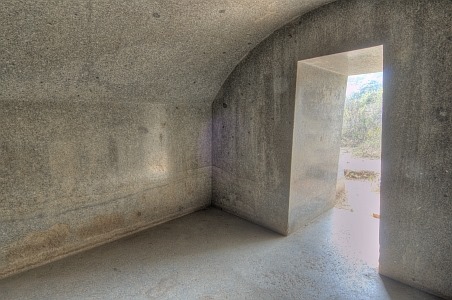The Megalithic Barabar Caves
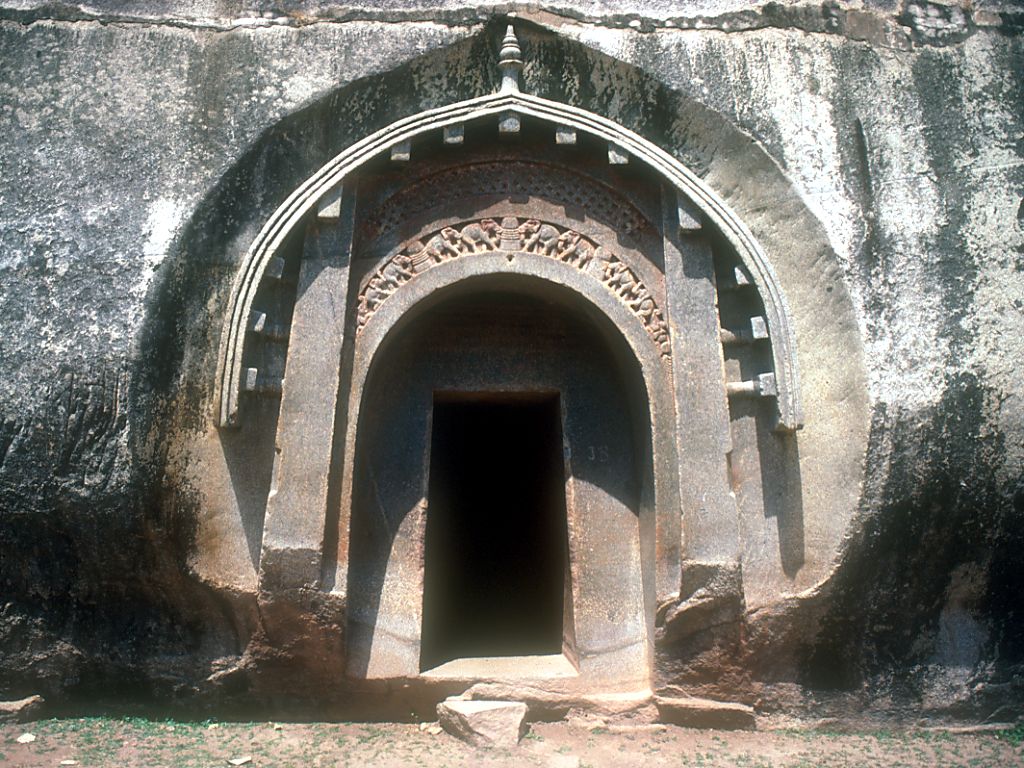
Located in the hills of Barābar and Nāgārjunī, near Gāyā, in the Maurya homeland, Magadh, the Barabar Caves are seven caves that were carved directly into the rock.
The caves are dated to the reign of Aśoka, and to the reign of his grandson, Daśaratha.
Of the four caves in the hills of Barābar, three were dedicated to Aśoka, who is identified in the inscriptions as Priyadarśin, while the three in the hills of Nāgārjunī bear the name of Daśaratha.
Unfortunately, the most interesting from an artistic point of view, the Lomaś Ṛṣi cave does not contain a Maurya inscription.
The caves of Barābar are a real megalithic marvel to behold and the oldest rock-cut caves in India.
The caves are scattered in the twin hills of Barābar (four caves) and Nagarjuni (three caves).
The Barābar structures are the Lomas Rishi cave (in the first picture above), which has an arch-like shape facade that imitates contemporary timber architecture.
On the doorway, a row of elephants proceeds towards stupa emblems, along the curved architrave.
The Sudama cave, with arches, has a bow shape.
The caves consist of a circular vaulted chamber with a rectangular mandapa.
The Karan Chaupar, which consists of a single rectangular room with polished surfaces, contains an inscription that could be dated to 245 BCE.
The Visva karma cave, reachable by marks called the “Ashoka steps” hewn in the cliff, which are identical to the “square track marks” often found in many megalithic sites globally, consists of two rectangular rooms.
Carved directly into the granite, these structures have enigmatic and baffling properties like an incredible echo inside of them and the granite itself is highly polished to the point of having a mirror-like reflection.
The angles are perfectly cut and the lines are straight like a razor.
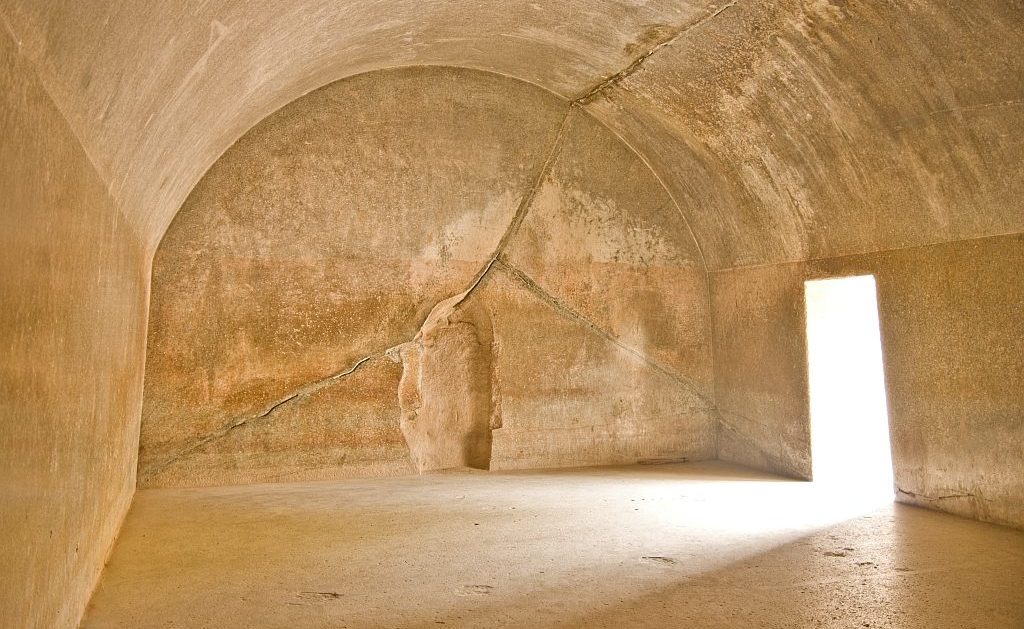
Although the caves bear several inscriptions inside of them, due to the raw, unpolished nature of those, most scholars agree that they were carved later not by the culture that originally built them, and it is thus difficult to have a precise dating, a question that is still an open debate.
Some inscriptions also present datings, but they don’t serve as indicators of the original construction.
For example, in the cave of Sudama the carving reads as follows: “By King Priyadarsin, in the 12th year of his reign, this cave of Banyans was offered to the Ajivikas.” which tells us that the king offered the cave to an ascetic cult in 257 BCE, but not that he actually built it.
The plane surfaces of the caves reverberate the sound, creating a very pronounced echo phenomenon.
This characteristic is common to all the caves of Barabar, and, by amplifying the vibrations and the harmonies, the chanting of the monks would’ve been greatly enhanced.
All of the Barabar caves share this interior polished appearance to a greater or lesser extent, with the exception of Lomas Rishi Cave, which, although designed on the same model, is only half-finished.
The purpose of these caves is unclear, as well as the reason why the artisans were so careful in their imitation of free-standing architectural structures and why they carved these forms in stone.
These questions are difficult to answer, but a clue to the end of the caves, at the very least, can come from the contents of the aforementioned inscriptions found within them.
While the inscriptions of the three Barābar caves are somewhat vague, those on the Nāgārjunī hill site clearly state that the caves were “donated” so that the ājīvikas could have a home during the rainy season “as long as [the] moon and the sun (they will last) “.
Clearly, these caves were intended to be permanent, or at least permanent like the sun and moon, and that they were intended as residences during the rainy season for use by the ājīvikas, a strictly ascetic religious sect of a heterodox mold (non-Vedic) that came out of the same intellectual and philosophical environment that favored the growth of Buddhism and Jainism around the sixth and fifth centuries BCE.
